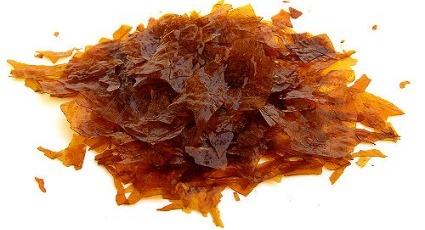Shellac
Media Gallery
Shellac is a Wood Finish that Has Been Used for Centuries
The history of shellac goes back for hundreds of years. The term “shellac” comes from the family of “lac” insects, which secrete a substance that was discovered centuries ago to work as a wood sealer. Today, these insects are cultivated for the purpose of collecting their secretions, which are refined, packaged, and sold commercially. Today, anyone who wants to use shellac to finish their furniture can purchase it at hardware and paint stores around the world.
Benefits of Shellac
There are several reasons that people use shellac to finish their furniture and smaller wood items:
- It provides a beautiful and soft shine.
- It is easy to work with.
- After it is dry, it is non-toxic.
- If it becomes damaged, it is easy to repair.
- It can be combined with any color pigment.
- It can be used as a sealant.
Negatives of Shellac
Aside from all the positives of using shellac as a finish, there are also negatives:
- It is not durable.
- If alcohol spills on shellac, it will cause immediate damage.
- Water and moisture can easily cause damage.
- It can scratch easily.
- It dries quickly, which can make the application process tricky.
- It can become easily damaged when exposed to heat.
Pre-Mixed Shellac vs. Shellac Flakes
When it comes to shellac, there are two options: pre-mixed shellac or shellac flakes. The pre-mixed type comes in a can which is ready for use as soon as it is opened.
Shellac flakes, on the other hand, must be mixed with denatured alcohol to produce a substance that can be applied to the wood. The benefit of using shellac flakes is that it can be mixed to the specific “cut” that is desired. A “cut” is the ratio of shellac flakes to denatured alcohol. Some projects might require a thicker or a thinner cut, and self-mixing the shellac provides you with the opportunity to be in control of the concentration.
How Long Does Shellac Last?
A shellac finish can last for many years as long as it does not encounter any chemicals, alcohol, water, or deep scratches. The greatest aspect of a shellac finish is that it is extremely simple to repair. If an area of shellac becomes damaged, simply remove the existing shellac from the affected area by rubbing it with alcohol, and re-apply several coats of new shellac. The area will need buffing and waxing so that it matches the original finish.
Shellac vs. Varnish
There is a definite difference between shellac and varnish, but both are used for the same general purpose – both are furniture finishing products. Shellac is not as durable as varnish, but it can be easier to repair. Shellac is much less water-resistant than varnish, and when water touches shellac, white spots or white rings appear very quickly. There are pros and cons to using any type of wood finishing product.
Before deciding which to use, make sure to evaluate the furniture, determine how and where it will be used, and decide what type of look you desire for the furniture. Shellac is known to warm the natural color of wood and provide a beautiful and soft shine.


